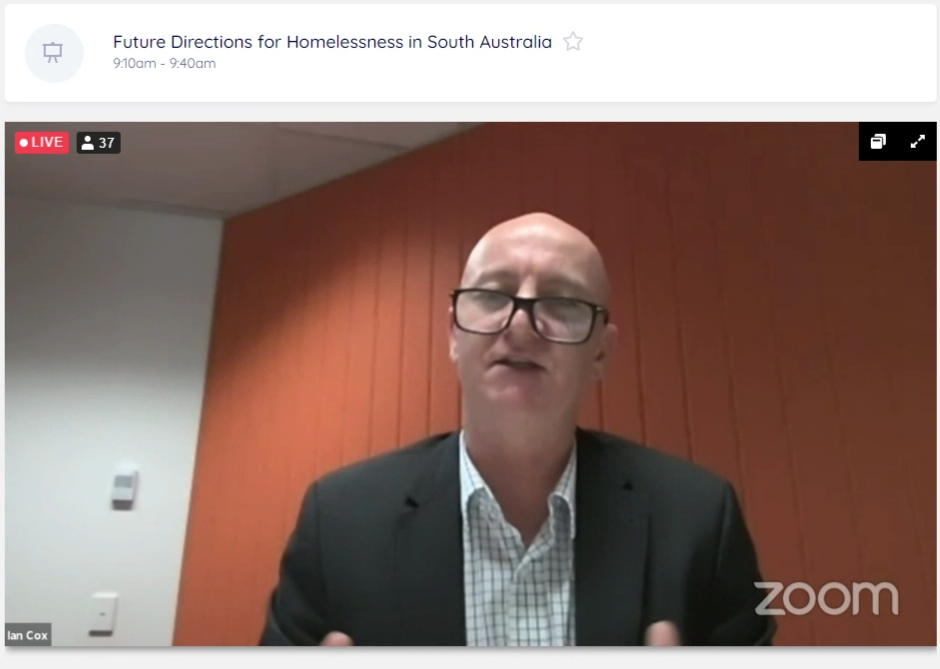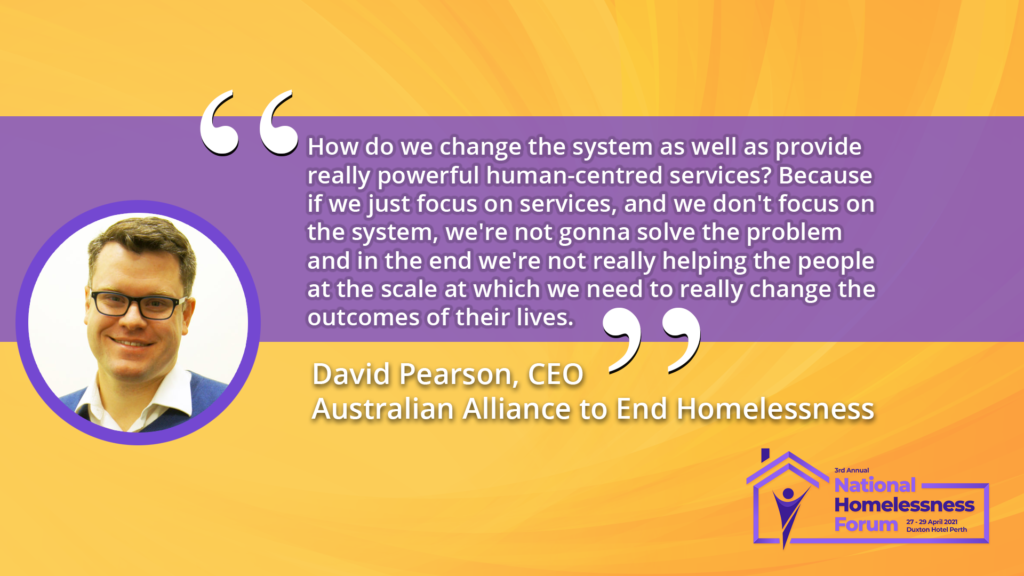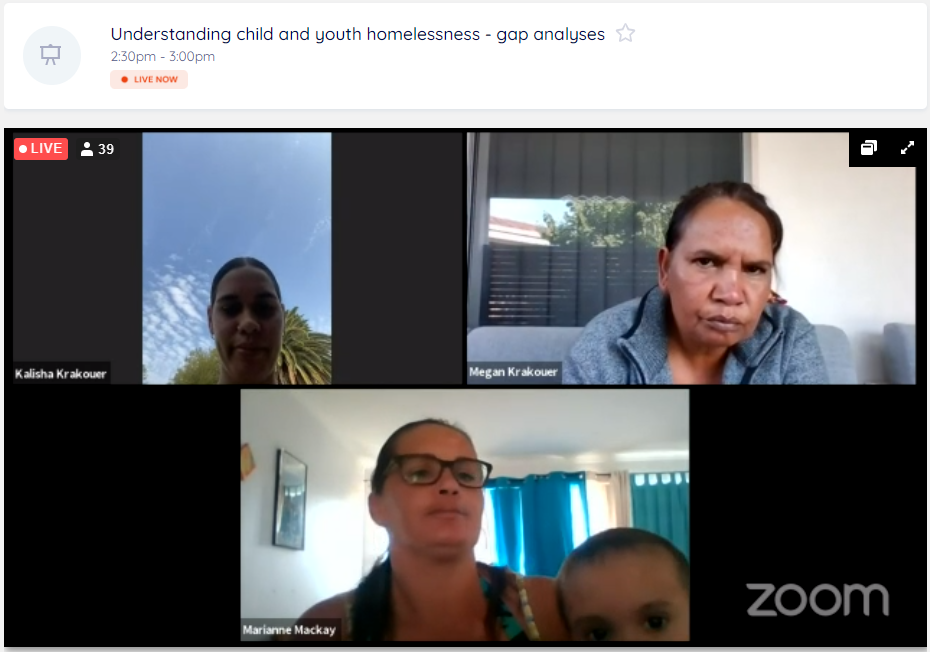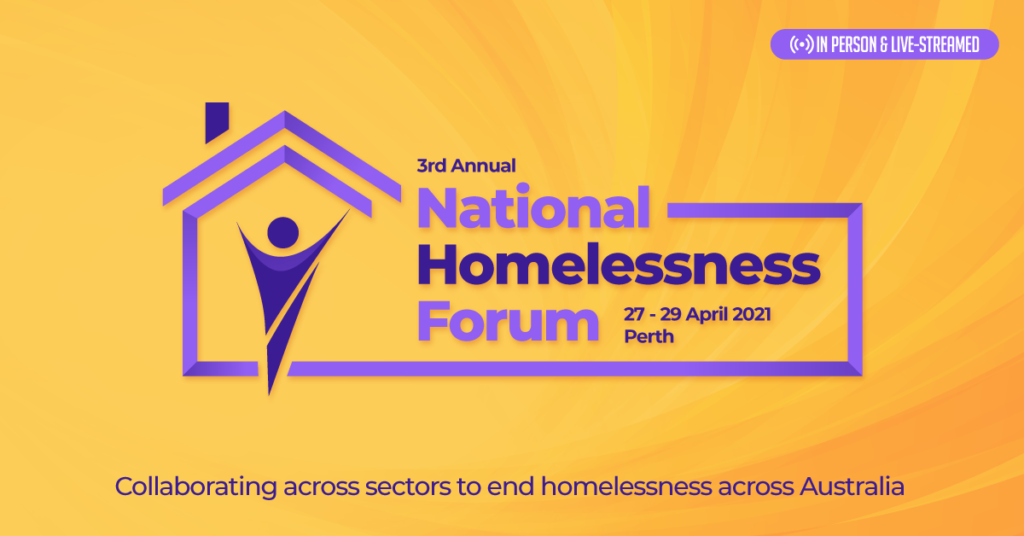The 2nd day of the 3rd Annual Homelessness Forum started with Ian Cox of the South Australia Housing Authority, who talked about Future Directions for Homelessness in Australia. Cox zeroed in on SA government’s efforts to curb homelessness, such as allocating $20 million on prevention and early intervention and sharing data with services to build on successful outcomes.

Suzanne Naden, CEO of Bungree Aboriginal Association presented in the next session and talked about transitioning people out of chronic homelessness. Naden gave particular emphasis to the plight of generations of Aboriginal people who are experiencing homelessness due to decades of neglect and inadequate services.
In case you missed it: The 3rd Annual Homelessness Forum Day 1: Key Takeaways
The next session was led by David Pearson, CEO of the Australian Alliance to End Homelessness. He talked about the strategies of communities who have achieved “functional zero” homelessness, particularly those in the US and Canada. Besides focusing on better services, Pearson also encouraged delegates to look at bringing about systematic change and break the cycle that leads to people sleeping rough.

After his presentation, Pearson joined Naden and Red Cross Australia’s Director for Western Australia, Craig Stewart. The three exchanged ideas regarding some pressing issues in the homelessness sector, particularly the importance of efficient data collection, as well as ensuring that the data can be used correctly to improve services.
In the next session, Alison McLean president of North East Action and Support for Youth Inc., (NESAY) talked about their efforts to alleviate other factors that surround or exacerbate a person’s homelessness. While not providing accommodation, McLean said they focus on creating programs and projects to engage the community, particularly the young people. Their activities include providing opportunities for young people to upskill, gain connections, and gain employment.
In the next session, Craig Stewart of Red Cross Australia returned to talk about creating trauma-informed service models. Like NESAY, Red Cross doesn’t necessarily focus on providing accommodation. Instead, they focus on likely exacerbating factors.
For his presentation, Jim Morrison of Yokai talked about Intergenerational trauma and its effects on Aboriginal and Torres Strait islanders. Morrison focused on how multiple generations feel the severe effects of colonisation and the policies that came with it, particularly those that are now sleeping rough.

In the next panel, Megan Krakouer of the National Suicide Prevention and Trauma Recovery Project returns with Kalisha Miniter-Krakouer and social justice advocate Marianne Mackay to talk about the gaps that need to be filled in Understanding child and youth homelessness.The panel honed in on cases of children who are forced into homelessness by circumstances out of their control, and often have to live a life of crime to get by.
Meanwhile, Austin Campbell of My Streets Ireland talked about how his organisation is providing education and employment to people experiencing homelessness in his country. This helps them target systemic homelessness by empowering their participants.
In the next session, Adrian Munro, CEO of Richmond Wellbeing talked about his organisation is focusing on helping people with their mental health as a way to combat homelessness. Munro also highlighted how sleeping rough exacerbates the issues affecting other sectors as well. He emphasised that solving homelessness would make a profound impact on other community service sectors.
The 2nd day of the 3rd Annual Homelessness Forum concluded with a spirited discussion between McKay, Natalie Bogoias , Dianne Logan, and Lisa Wood about providing assertive outreach services for those in need.










